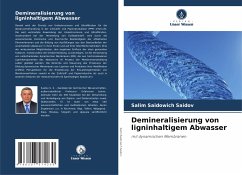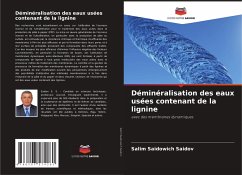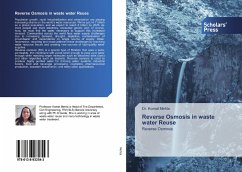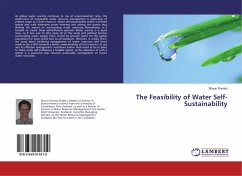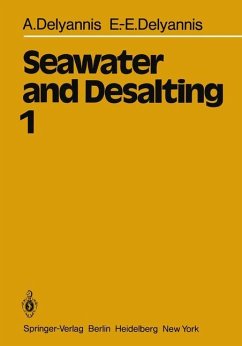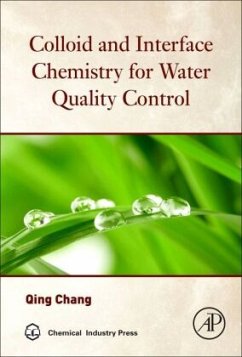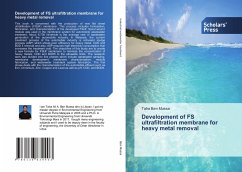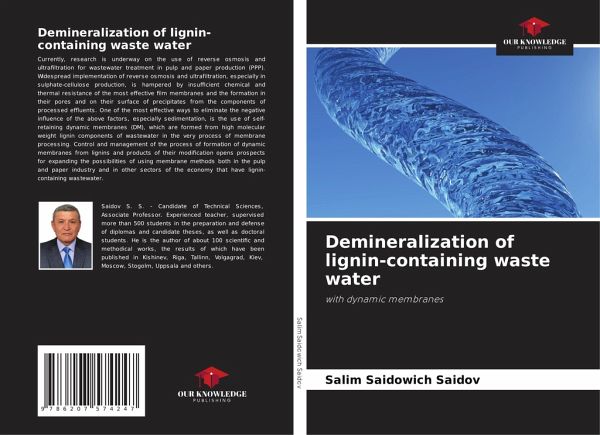
Demineralization of lignin-containing waste water
with dynamic membranes
Versandkostenfrei!
Versandfertig in 6-10 Tagen
37,99 €
inkl. MwSt.

PAYBACK Punkte
19 °P sammeln!
Currently, research is underway on the use of reverse osmosis and ultrafiltration for wastewater treatment in pulp and paper production (PPP). Widespread implementation of reverse osmosis and ultrafiltration, especially in sulphate-cellulose production, is hampered by insufficient chemical and thermal resistance of the most effective film membranes and the formation in their pores and on their surface of precipitates from the components of processed effluents. One of the most effective ways to eliminate the negative influence of the above factors, especially sedimentation, is the use of self-r...
Currently, research is underway on the use of reverse osmosis and ultrafiltration for wastewater treatment in pulp and paper production (PPP). Widespread implementation of reverse osmosis and ultrafiltration, especially in sulphate-cellulose production, is hampered by insufficient chemical and thermal resistance of the most effective film membranes and the formation in their pores and on their surface of precipitates from the components of processed effluents. One of the most effective ways to eliminate the negative influence of the above factors, especially sedimentation, is the use of self-retaining dynamic membranes (DM), which are formed from high molecular weight lignin components of wastewater in the very process of membrane processing. Control and management of the process of formation of dynamic membranes from lignins and products of their modification opens prospects for expanding the possibilities of using membrane methods both in the pulp and paper industry and in other sectors of the economy that have lignin-containing wastewater.





